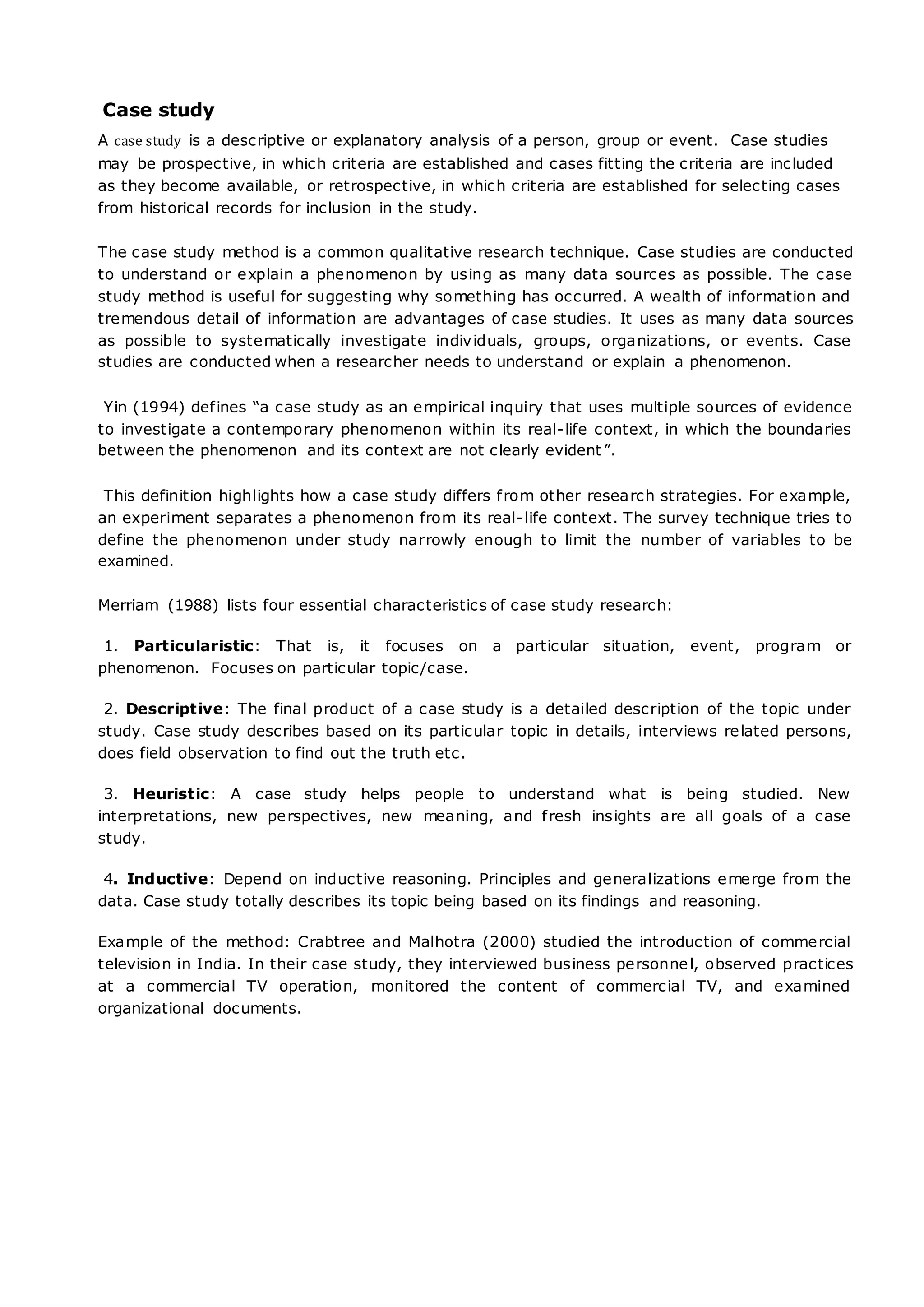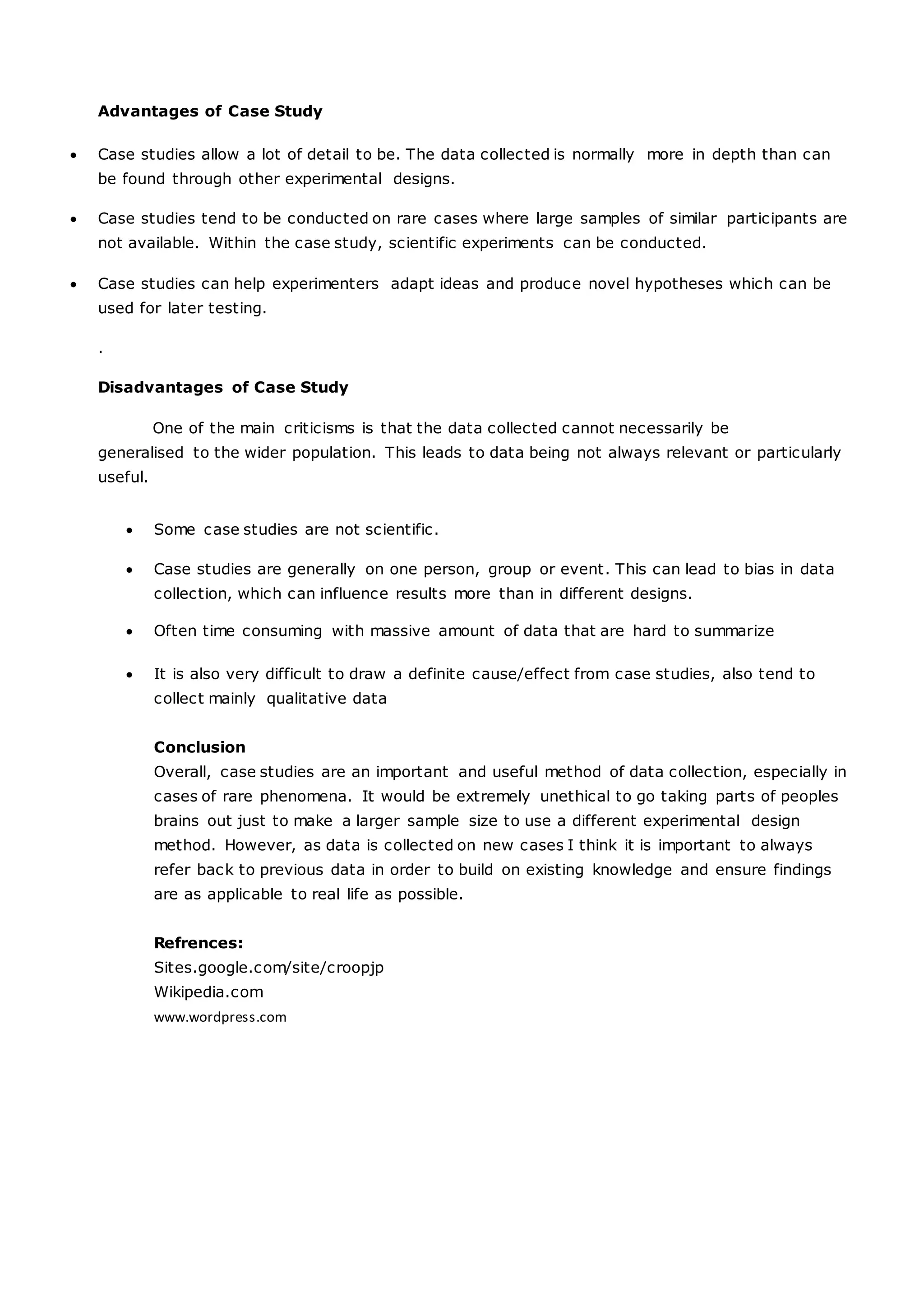1. A case study is an in-depth analysis of a person, group or event that uses multiple sources of evidence to investigate a contemporary phenomenon within its real-life context. Case studies can be prospective or retrospective and are useful for understanding why something occurred.
2. The key characteristics of a case study are that they are particularistic, descriptive, heuristic, and inductive. Case studies focus on a specific topic, provide detailed descriptions, help people understand the phenomenon being studied, and principles emerge from the data rather than being predetermined.
3. The process of a case study involves designing appropriate research questions, determining what constitutes the case or unit of analysis, conducting a pilot study and literature review, collecting data through documents



